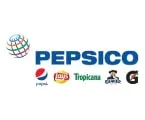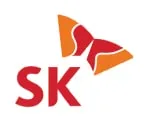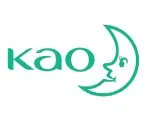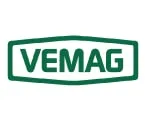Resources
About Us
Collaborative Manufacturing Solutions Market Size, Share, Forecast & Trend Analysis by Component (Solutions, Services), Application (Assembly & Production Operations, Material Handling & Logistics), End User (Automotive & Transportation, Aerospace & Defense, Electronics) & Geography- Global Forecast to 2032
Report ID: MRSE - 1041455 Pages: 250 Mar-2025 Formats*: PDF Category: Semiconductor and Electronics Delivery: 24 to 72 Hours Download Free Sample ReportThe growth of the Collaborative Manufacturing Solutions Market is fueled by the surging demand for automation and the extensive implementation of Industry 4.0. Manufacturing companies in different sectors are investing in intelligent manufacturing solutions, industrial automation, and robotics to increase productivity, minimize operational expenditure, and ensure efficiency. The convergence of cutting-edge technologies like Artificial Intelligence (AI), the Industrial Internet of Things (IIoT), and machine learning is revolutionizing the manufacturing industry. These technologies facilitate predictive maintenance, real-time monitoring of data, and process optimization, which are essential for enhancing overall operational performance. Furthermore, the growth of human-machine interaction is propelling the use of collaborative robots (cobots) that operate together with human operators, improving safety in the workplace and minimizing risks from repetitive and dangerous tasks.
Government programs and policies facilitating smart manufacturing are also driving the market, especially in countries like China, where the "Made in China 2025" initiative focuses on digitalization of manufacturing. Yet, the growth of this market is anticipated to be limited by initial investment constraints and complex system integration issues, which may be challenging for SMEs. Even with the long-term advantages, small enterprises face challenges in implementing automated systems due to the high costs of deployment, staff training, and infrastructure reorganization.
The other key driver impacting market growth is the growing need for cybersecurity and data privacy. As manufacturing processes get more interlinked, the threat of cyberattacks, data breaches, and interoperability problems has risen as well. Consequently, businesses are shifting focus to creating secure and resilient solutions to help machines and human workers work together seamlessly. The need for collaborative manufacturing solutions is most pronounced in automotive, electronics, aerospace, healthcare, and consumer goods industries where automation is an essential factor to ensure efficiency and quality levels. Additionally, fast-growing emerging economies, especially those in the Asia-Pacific region, are undergoing fast-paced industrialization, which further drives the growth of the collaborative manufacturing solutions market. China, Japan, and India are investing a lot in automation technologies, making the region the fastest-growing market for collaborative manufacturing solutions.
On the basis of component, the collaborative manufacturing solutions market is broadly divided into two main components: solutions and services. In 2025, the solutions segment was the largest in the overall collaborative manufacturing solutions market. In solutions segment, collaborative robots (cobots) commanded the largest share in 2025. Cobots have become synonymous with contemporary manufacturing because they can work collaboratively with human operators, improving productivity, accuracy, and safety. Cobots' wide range of applications in performing activities like assembly, welding, and material handling has made them popular with many industries. This large applicability has made cobots the largest revenue-generating segment of collaborative manufacturing solutions.
In addition, the cobot segment is also expected to witness significant growth during the forecast period. The fast growth of this segment is mainly driven by the technological advances in Artificial Intelligence (AI), the Industrial Internet of Things (IIoT), and robotics. These technological advances have opened up the scope of cobots to perform more complex tasks more efficiently. Besides, the movement towards Industry 5.0 highlights the use of seamless human-robot collaboration, mass customization, and sustainable manufacturing, all of which are supported by the functionalities provided by cobots. With industries increasingly looking for flexible and productive automation solutions, collaborative robot adoption will continue to pick up pace in many countries across the globe.
Based on applications, the global collaborative manufacturing solutions market categorized into assembly & production operations, material handling & logistics, quality control & inspection, predictive maintenance & monitoring, and others. In 2025, the material handling & logistics segment is anticipated to hold the major share of the overall collaborative manufacturing solutions market. Material handling involves transportation, storage, and control of materials within factory premises. Its need for automation has driven impressive adoption of cooperative solutions, more so in automobile, electronics, and consumer electronics industries. Necessity for increased efficiency, less manual work, and enhancing safety has led to material handling being the largest application segment, revenue-wise.
One of the key reasons for this dominance is the fact that material handling operations are repetitive, are labor-intensive and subject to errors by humans and hence are very much suited to automation. All these are highly used to streamline processes like palletizing, packaging, sorting, lifting, and moving goods and are done through collaborative robots (cobots), autonomous mobile robots (AMRs), automated guided vehicles (AGVs), and robotic arms. These solutions profoundly increase operational productivity, lower costs of labor, and enhance labor safety by curbing the hazards of injury when handling materials manually.
Another key driver is the rise of e-commerce and warehouse automation, particularly in regions like North America, Europe, and Asia-Pacific. The increasing demand for faster order fulfillment and efficient supply chain management has led companies like Amazon, DHL, and Alibaba to invest heavily in automated material handling systems. This trend has fueled the adoption of robotic picking, automated storage and retrieval systems (AS/RS), and conveyor-based solutions, further boosting revenue in this segment.
Based on end-user, the overall collaborative manufacturing solutions market is segmented into automotive & transportation, aerospace & defense, electronics & semiconductors, healthcare & medical devices, consumer goods & retail, heavy engineering & machinery, and other industries. In 2025, Automotive & Transportation segment is expected to account for the largest share of the overall collaborative manufacturing solutions market. The automotive sector has been a pioneer in adopting automation technologies to enhance manufacturing processes. Collaborative solutions are extensively used for assembly, painting, welding, and quality inspection tasks, leading to increased efficiency and reduced production times. The industry's continuous push for innovation and efficiency solidifies its position as the largest end-user segment in the collaborative manufacturing solutions market.
However, the electronics and semiconductor industry is witnessing rapid growth in the adoption of collaborative manufacturing solutions. The increasing complexity of electronic devices and the demand for miniaturization require high precision and flexibility in manufacturing processes. Collaborative solutions enable efficient handling of delicate components, assembly, and quality control, driving significant growth in this segment.
Based on geography, the collaborative manufacturing solutions market is segmented into North America, Europe, Asia-Pacific, Latin America, and the Middle East & Africa. In 2025, Asia-Pacific region is expected to account for the largest share of the global collaborative manufacturing solutions market, primarily due to the presence of major manufacturing hubs in countries like China, Japan, and South Korea. The region's strong industrial base, coupled with increasing investments in automation and technology adoption, contributes to its dominant market position.
Moreover, this region is also expected to witness rapid growth during the forecast period. The rapid industrialization and economic development in countries such as India and Southeast Asian nations are driving the demand for collaborative manufacturing solutions. The focus on improving manufacturing capabilities, enhancing productivity, and maintaining competitiveness in the global market is leading to accelerated adoption of collaborative technologies, making Asia-Pacific the fastest-growing region in this sector.
The report offers a competitive analysis based on an extensive assessment of the leading players’ product portfolios, geographic presence, and key growth strategies adopted in the last 3–4 years. Some of the key players operating in the Collaborative Manufacturing Solutions Market are KUKA AG (Germany), Universal Robots (Denmark), Honeywell International Inc. (USA), Siemens AG (Germany), ABB Ltd. (Switzerland), Mitsubishi Electric Corporation (Japan), Intel Corporation (USA), General Electric Company (USA), IBM Corporation (USA), Cisco Systems Inc. (USA), Emerson Electric Co. (USA), and Omron Corporation (Japan).
|
Particulars |
Details |
|
Number of Pages |
~250 |
|
Format |
|
|
Forecast Period |
2025–2032 |
|
Base Year |
2024 |
|
CAGR |
17.4% |
|
Market Size (2025) |
$4.14 billion |
|
Market Size (2032) |
$12.71 billion |
|
Segments Covered |
By Component
By Application
By End-User Industry
|
|
Countries/Regions Covered |
North America (U.S., Canada), Europe (Germany, France, U.K., Italy, Spain, Russia, and Rest of Europe), Asia-Pacific (China, Japan, India, Australia, South Korea, Indonesia , and Rest of Asia-Pacific), Latin America (Brazil, Mexico, Argentina, Rest of Latin America), and the Middle East & Africa |
|
Key Companies |
KUKA AG (Germany), Universal Robots (Denmark), Honeywell International Inc. (USA), Siemens AG (Germany), ABB Ltd. (Switzerland), Mitsubishi Electric Corporation (Japan), Intel Corporation (USA), General Electric Company (USA), IBM Corporation (USA), Cisco Systems Inc. (USA), Emerson Electric Co. (USA), and Omron Corporation (Japan). |
The global collaborative manufacturing solutions market size was valued at $3.6 billion in 2024.
The market is projected to grow from $4.14 billion in 2025 to $12.71 billion by 2032.
The collaborative manufacturing solutions market analysis indicates significant growth, reaching $12.71 billion by 2032, at a compound annual growth rate (CAGR) of 17.4% from 2025 to 2032.
The key companies operating in this market include KUKA AG (Germany), Universal Robots (Denmark), Honeywell International Inc. (USA), Siemens AG (Germany), ABB Ltd. (Switzerland), Mitsubishi Electric Corporation (Japan), Intel Corporation (USA), General Electric Company (USA), IBM Corporation (USA), Cisco Systems Inc. (USA), Emerson Electric Co. (USA), and Omron Corporation (Japan).
Some of the key prominent market trends in the collaborative manufacturing solutions market is integration of advanced technologies and emphasis on sustainable practices, and evolution of collaborative manufacturing facilities.
By component, the solutions segment is forecasted to hold the largest market share; by application, the material handling & logistics segment is forecasted to hold the largest market share; and by end use industry, the automotive & transportation segment is expected to dominate the market.
By region, Asia-Pacific will hold the largest collaborative manufacturing solutions market share in 2025. Also, the region is expected to witness the fastest growth during the forecast period.
The primary drivers of collaborative manufacturing solutions market include technological advancements: increasing automation, supply chain collaborations, and demand for speed to market
























Published Date: Jul-2024
Please enter your corporate email id here to view sample report.
Subscribe to get the latest industry updates